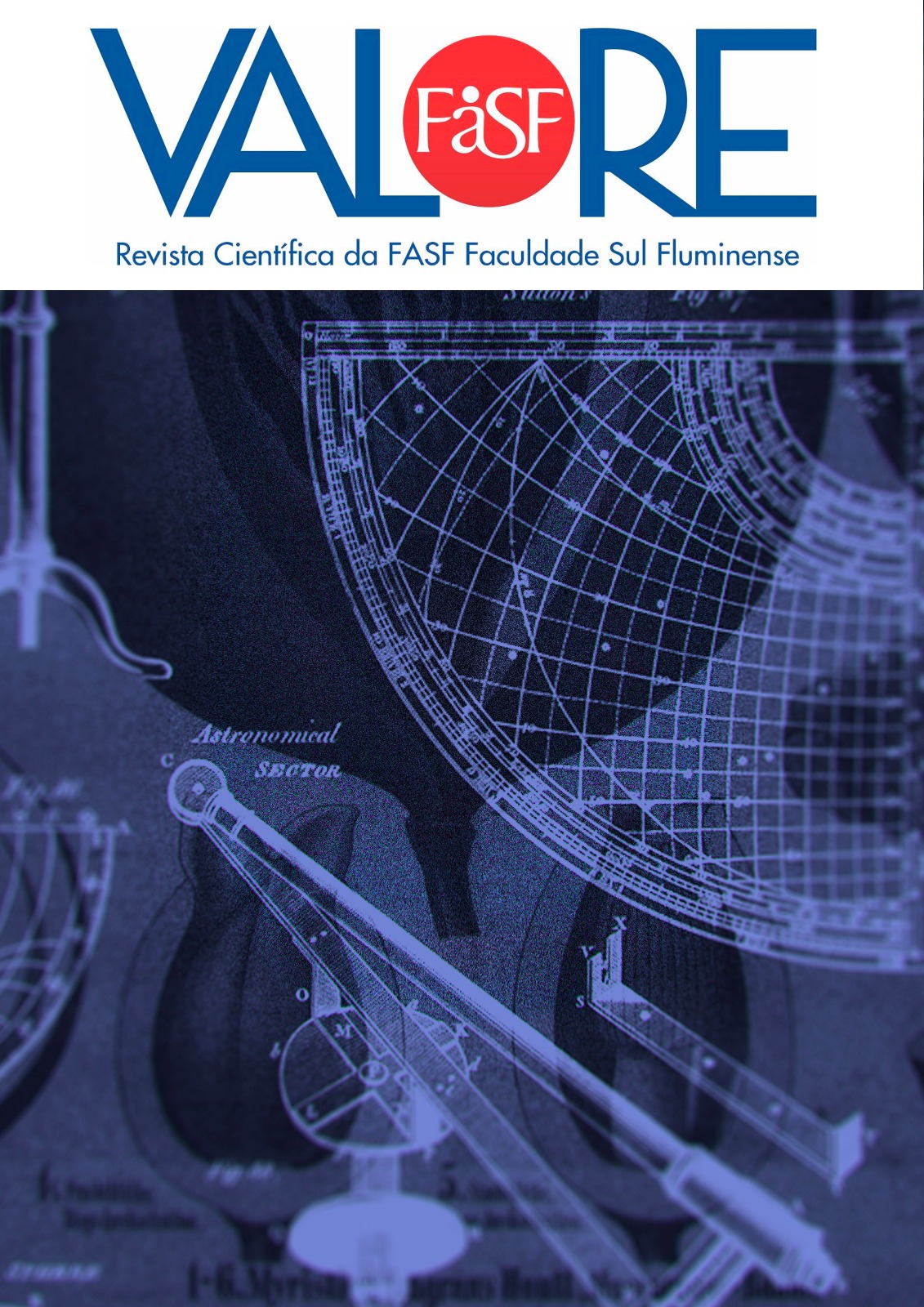GERENCIAMENTO DE RISCO EM OFICINA DE MANUTENÇÃO: ESTUDO DE CASO NO TRANSPORTE PÚBLICO POR ÔNIBUS
DOI:
https://doi.org/10.22408/reva502020559e-5050Resumo
Em oficinas de manutenção, um grande e variado número de riscos podem causar inúmeros danos materiais, além de acidentes que afetam a saúde e segurança física das pessoas envolvidas neste processo. O presente artigo tem por objetivo identificar processos críticos em oficinas de manutenção, formulando assim, planos de ação para o tratamento destas falhas. Para tal, foi realizado um estudo de caso em uma oficina de manutenção, de uma empresa de transporte público por ônibus, localizada na Região Sul Fluminense do Estado do Rio de Janeiro, onde, através da aplicação e integração das ferramentas Análise Preliminar de Riscos (APR), Análise de Modo e Efeito de Falhas (FMEA) e Análise de Árvore de Evento (ETA), em conjunto com a participação de especialistas, foi possível atingir os objetivos propostos. A pesquisa proporcionou mudanças no processo de manutenção da empresa pesquisada e possibilitou melhorias para a mesma, além de contribuir com o setor.
Palavras-chave: Gestão de Riscos. Oficina de Manutenção. Transporte Público. FMEA. ETA.
Downloads
Referências
BEIM, G. K. & HOBBS, B.F. (1997). Event tree analysis of lock closure risks. Journal of Water. Resources Planning and Management ASCE 123, 137–198. https://doi.org/10.1061/(ASCE)0733-9496(1997)123:3(169)
BELLUCCI, S.; CORREA, L.R.; DEUTSCH, J.G. & JOSHI, C. (2014). Introduction: Labour in Transport: Histories from the Global South (Africa, Asia, and Latin America), c.1750 to 1950. International Institut vor Sociale Geschiedenis, Special Issue, pp. 1–10. doi:10.1017/S0020859014000364
BILSKA, B.; TOMASZEWSKA M. & KRAJEWSKA D.K. (2020). Managing the Risk of Food Waste in Foodservice Establishments. Sustainability 2020, 12, 2050; doi:10.3390/su12052050
BOWLES, J.B. & PELAEZ, C.E. (1995). Fuzzy Logic Prioritization Of Failures In A System Failure Mode, Effects And Criticality Analysis. Reliability Engineering & System Safety, 50(2), 203–213. https://doi.org/10.1016/0951-8320(95)00068-D
BRITO, M.P.; GRIFFITHS, G.; MOWLEM, M. & MAKINSON, K. (2012). Estimating and Managing Blowout Risk During Access To Subglacial Antarctic Lakes. Antarctic Science 25(1), 107–118. doi:10.1017/S0954102012000442
CARBONE, T.A. & TIPPETT, D.D. (2004). Project Risk Management Using The Project Risk FMEA. Engineering Management Journal, 16, 28-35. https://doi.org/10.1080/10429247.2004.11415263
CERTA, A.; HOPPS, F.; INGHILLERI, R. & LA FATA C.M. (2017). A Dempster-Shafer Theory-Based Approach To The Failure Mode, Effects And Criticality Analysis (FMECA) Under Epistemic Uncertainty: Application To The Propulsion System Of A Fishing Vessel. Reliability Engineering and System Safety 159, 69–79. http://dx.doi.org/10.1016/j.ress.2016.10.018
CRESWELL, J.W. (2007). Projeto de Pesquisa: Método Qualitativo, Quantitativo e Misto. 2ª Ed. Porto Alegre: Ed. Artmed.
DE OLIVEIRA, U. R.; MARINS, F. A. S.; ROCHA, H. M. & SALOMON, V. A. P. (2017). The ISO 31000 standard in supply chain risk management. Journal of Cleaner Production.151, 10. pp. 616-633. https://doi.org/10.1016/j.jclepro.2017.03.054
DOMINGUES, M. S. Q.; BAPTISTA, A. L. F. & DIOGO, M. T. (2017). Engineering Complex Systens Applied To Risck Management In The Mining Industry. International Journal Of Mining Science And Thechnology. https://doi.org/10.1016/j.ijmst.2017.05.007
FERNANDES, J. M. R. & REBELATO, M. G. (2006). Proposal of a method to integrate QFD and FMEA. Gestão & Produção, v. 13, n. 2, p. 245-259. http://dx.doi.org/10.1590/S0104-530X2006000200007
FERNANDEZ-SANCHEZ G.; BERZOSA A.; BARANDICA J. M.; CORNEJO E. & SERRANO J. M. (2015). Opportunities for GHG emissions reduction in road projects: a comparative evaluation of emissions scenarios using CO2NSTRUCT. Journal of Cleaner Production 104, 156 - 167. http://dx.doi.org/10.1016/j.jclepro.2015.05.032
GERHARDT, T. E. & SILVEIRA, D. T. (2009). Métodos de Pesquisa. Coordenado pela Universidade Aberta do Brasil – UAB/UFRGS e SEAD/UFRGS. Porto Alegre: Editora da UFRGS.
GIL, A. C. (2002). Como elaborar projetos de pesquisa. 4. ed. São Paulo: Ed. Atlas.
HENDRICKS, K. B.; SINGHAL, V. R. & ZHANG, R. R. (2009). The effect of operational slack, diversification, and vertical relatedness on the stock market reaction to supply chain disruptions. J. Oper. Manag. 27 (3), 233e246. https://doi.org/10.1016/j.jom.2008.09.001
HONG, E. S.; LEE, I. M.; SHIN, H. S.; NAM, S. W. & KONG, J. S. (2009). Quantitative risk evaluation based on event tree analysis technique: Application to the design of shield TBM. Tunnelling and Underground Space Technology - 24 - 269–277. doi:10.1016/j.tust.2008.09.004
HUANG, H. W.; SHIH, C.; YIH, S.; CHEN M. H. & LIN, J. M. (2007). Model Extension and Improvement For Simulator-Based Software Safety Analysis. Nuclear Engineering and Design 237 (2007) 955–971. doi:10.1016/j.nucengdes.2006.10.018
HULT, G. T. M.; CRAIGHEAD, C. W. & KETCHEN JR., D. J., (2010). Risk uncertainty and supply chain decisions: a real options perspective. Decis. Sci. 41 (3), 435e458. Doi: 10.1111/j.1540-5915.2010.00276.x
ISO 31000: (2009), Risk Management — Principles and Guidelines. Geneva: International Standards Organisation, 2009.
ISO/IEC 31010. (2012), Risk management – Risk assessment techniques, International Organization for Standardization. ISO/IEC 31010. 2012.
JIANG, W.; XIE, C.; ZHUANG, M. & TANG, Y. (2017). Failure Mode And Effects Analysis Based On A Novel Fuzzy Evidential Method. Applied Soft Computing 57, 672–683. http://dx.doi.org/10.1016/j.asoc.2017.04.008
KHAN, F. & HUSAIN, T. (2001). Risk Assessment Aand Safety Evaluation Using Probabilistic Fault Tree Analysis. Human and Ecological Risk Assessment: Vol. 7, No. 7, pp. 1909-1927. doi:10.1016/j.nucengdes.2006.10.018
KHAN, F.; RATHNAYAKA, S. & AHMED, S. (2015). Methods and models in process safety and risk management: Past, present and future. Process Safety and Environmental Protection, 116-147. https://doi.org/10.1016/j.psep.2015.07.005
LIU, H. C.; FAN, X. J.; LI, P. & CHEN, Y. Z. (2014). Evaluating The Risk Of Failure Modes With Extended MULTIMOORA Method Under Fuzzy Environment. Engineering Applications of Artificial Intelligence34, 168–177. http://dx.doi.org/10.1016/j.engappai.2014.04.011
MCELROY, L. M.; KHORZAD, R.; NANNICELLI, A. P.; BROWN, A. R.; LADNER, D. P. & HOLL, J. L. (2015). Failure mode and effects analysis: A comparison of two common risk prioritisation methods. BMJ Qual Saf, pp. 329–336. doi:10.1136/bmjqs-2015-004130
MENNO Y.; ODED C. & BART V. A. (2020). Crowding valuation in urban tram and bus transportation based on smart card data, Transportmetrica A: Transport Science, 16:1, 23-42, DOI: 10.1080/23249935.2018.1537319
MOHAMMADFAM I. & ZAREI E. (2015). Safety risk modeling and major accidents analysis of hydrogen and natural gas releases: A comprehensive risk analysis framework. International journal of hydrogen energy 40 (2015) 13653 e 13663. http://dx.doi.org/10.1016/j.ijhydene.2015.07.117
NÝVLT, O. & RAUSAND, M. (2012). Dependencies in event trees analyzed by Petri nets. Reliability Engineering and System Safety 104 - 45–57. http://dx.doi.org/10.1016/j.ress.2012.03.013
ÖZFIRAT, M. K.; ÖZKAN, E.; KAHRAMAN, B.; ENGU, B. S. & YETKIN, M. E. (2017). Integration of risk matrix and event tree analysis: a natural stone plant case; Sadhana Vol. 42, No. 10, pp. 1741–1749. DOI 10.1007/s12046-017-0725-6
PETROVIC, D. V.; TANASIJEVIC´, M.; MILIC´, V.; LILIC´, N.; STOJADINOVIC´, S. & SVRKOTA, I. (2014). Risk Assessment Model Of Mining Equipment Failure Based On Fuzzy Logic. Expert Systems with Applications 41, 8157–8164. http://dx.doi.org/10.1016/j.eswa.2014.06.042
PUENTE, J.; PINO, R.; PRIORE, P. & FOUENTE, D. L. (2002). A decision support system for applying failure mode and effects analysis. International Journal of Quality & Reliability Management, Bradford, v. 19, n. 2, p. 137-151. Doi: 10.1108/02656710210413480
RAMZALI, N.; LAVASANI, M. R. M. & GHODOUSI, J. (2105). Safety barriers analysis of offshore drilling system by employing Fuzzy Event Tree Analysis. Safety Science 78 49–59. http://dx.doi.org/10.1016/j.ssci.2015.04.004
SCHUYLER, J. R. (2001). Risk and decision analysis in projects. 2 ed. Newtown Square: PMI.
STAMATIS, D. H. (2003). Failure Mode and Effect Analysis: FMEA from theory to execution. 2ª ed. ASQC, Milwaukee: Quality Press.
TSANG, A. H. C. (2002). Strategic dimensions of maintenance management. Journal of Quality in Maintenance Engineering, v.8, n.1, p.7-39. doi/pdf/10.1108/13552510210420577
VALENTE, A. M.; PASSAGLIA, E.; CRUZ, J. A.; MELO, J. C. & CARVALHO, N. A. (2008). Qualidade e Produtividade nos Transportes - São Paulo – Cengage Learning.
YIN, R. K. (2001). Estudo de caso: Planejamento e métodos. Porto Alegre, RS: Ed. Bookman.
Downloads
Publicado
Como Citar
Edição
Seção
Licença
Autores que publicam nesta revista concordam com os seguintes termos:
Autores mantêm os direitos autorais e concedem à revista o direito de primeira publicação;
Autores têm permissão e são estimulados a publicar e distribuir seu trabalho online (ex.: em repositórios institucionais ou na sua página pessoal) já que isso pode gerar alterações produtivas, bem como aumentar o impacto e a citação do trabalho publicado
Em virtude da aparecerem nesta revista de acesso público, os artigos são de uso gratuito, com atribuições próprias, em aplicações educacionais e não-comerciais.












